Key takeaways
- The Nuckelavee, a creature from Orcadian folklore, symbolizes environmental fears and challenges faced by ancient societies, serving as a cautionary tale about nature’s fragility.
- Legends of the Nuckelavee often emphasize its destructive powers over crops and livestock, reflecting real-life anxieties about survival in a harsh environment.
- Witness accounts of the Nuckelavee highlight the blend of myth and reality, adding layers of cultural significance and personal impact on those living in its supposed habitat.
- The myth conveys important lessons about respecting nature and recognizing boundaries, suggesting that awareness and caution can protect against environmental dangers.
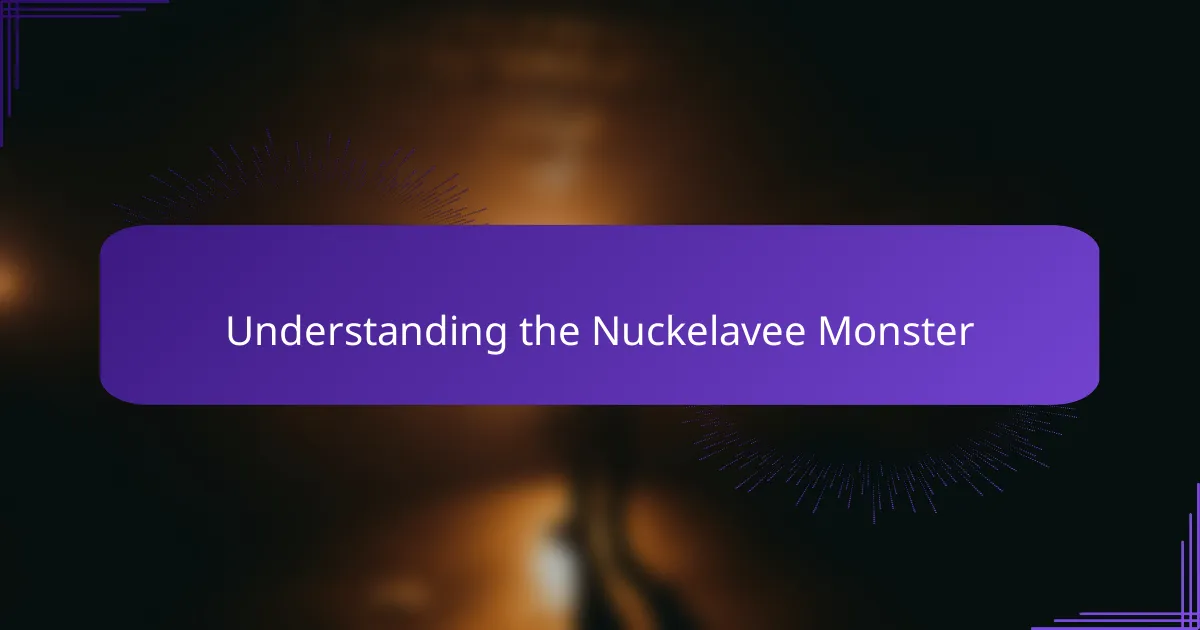
Understanding the Nuckelavee Monster
The Nuckelavee monster is one of those creatures that stays with you long after you first hear about it. Its appearance—a grotesque fusion of a horse and a human torso fused together, with no skin and pulsating veins—triggers a primal unease I can still vividly recall from stories I heard as a child. Have you ever encountered a legend that unsettles you simply because it feels so vividly real in your imagination?
What I find particularly chilling about the Nuckelavee is its association with toxic breath, believed to cause crops to wither and livestock to die. This isn’t just a monster of physical horror but one that embodies environmental doom, which makes me wonder how ancient societies used such stories to explain real-world calamities. It’s as if the Nuckelavee serves as a warning wrapped in myth, reminding us of nature’s fragility and our place within it.
Understanding the Nuckelavee also means grappling with its origins in Orcadian folklore, where the boundaries between the natural and supernatural blur. This monster is not just a scary story—it represents deep cultural fears and the human need to personify misfortune. Reflecting on this, I realize these tales are more than entertainment; they’re windows into how people made sense of a harsh and unpredictable world.
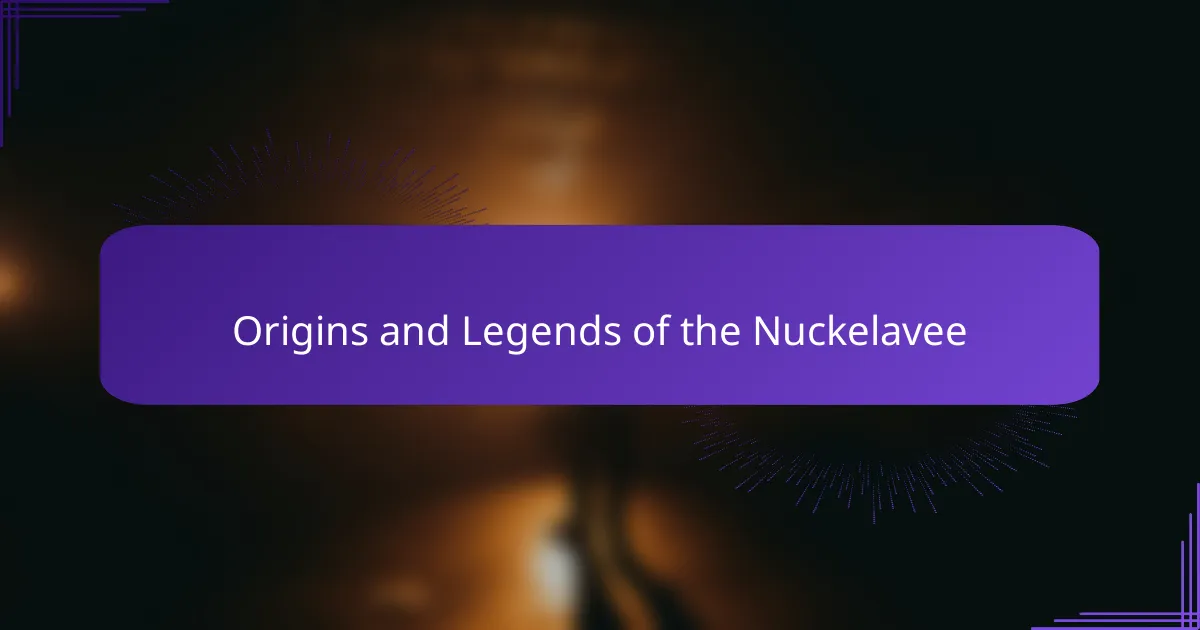
Origins and Legends of the Nuckelavee
The Nuckelavee’s origins trace back to the Orkney Islands, where seafaring communities wove tales that blended the terrifying with the mystical. I remember reading how this creature first emerged from the sea, an elemental force as wild and untamable as the ocean itself. Doesn’t it strike you as fascinating how isolated places often birth legends that reflect their environment’s raw power?
One story that sticks with me is about how the Nuckelavee’s skinlessness symbolizes unchecked destruction—its raw flesh exposed to all elements, just like the harsh winds and waves these islanders faced daily. When I think about it, the monster’s gruesome form isn’t just horror for horror’s sake; it’s a vivid expression of nature’s unforgiving aspects. Could it be that such vivid imagery helped these communities communicate very real fears about survival?
The legends also speak of the Nuckelavee’s hatred for fresh water, which it cannot cross, creating a tangible boundary between safety and danger in the tales. This detail feels almost like an ancient survival guide hidden within myth—a way to make sense of the unpredictable threats lurking beyond known borders. I find myself wondering if these stories gave people more than fear; perhaps they offered a sense of control in an uncontrollable world.
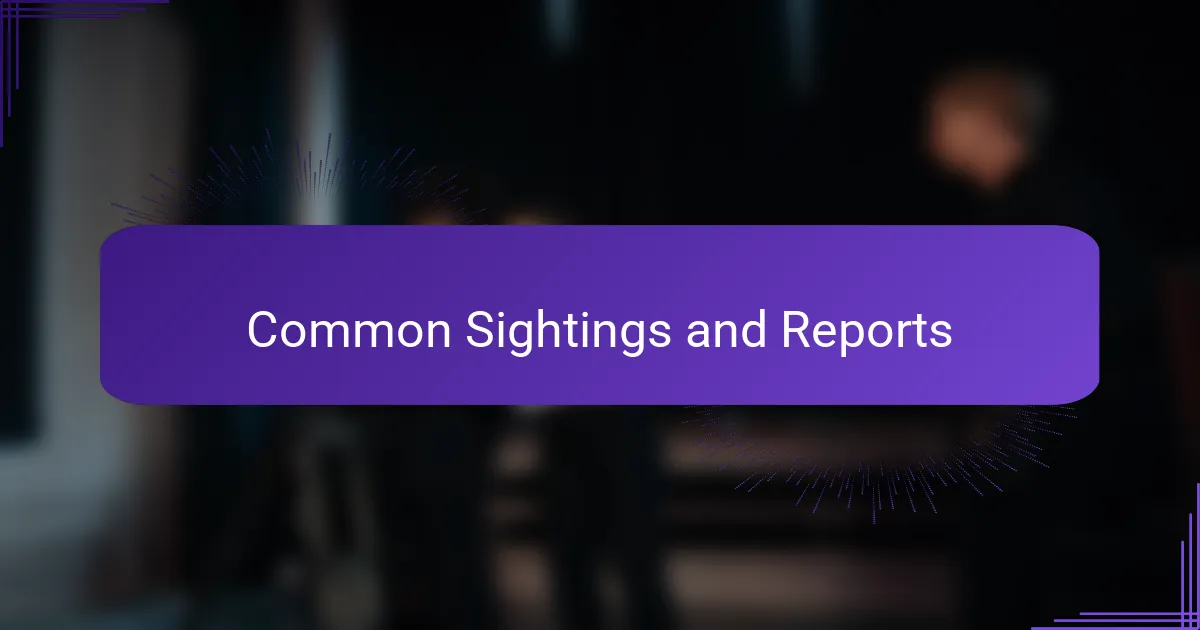
Common Sightings and Reports
It’s fascinating how most sightings of the Nuckelavee come from those remote parts of Orkney, where the mist seems thick enough to hide almost anything. I remember hearing a tale from a fisherman whose eyes still held that mix of fear and disbelief as he described seeing a monstrous figure galloping along the shore, its breath wilting the grass beneath. Have you ever wondered how these encounters, often brief and shrouded in fog, leave such a lasting impression on those who witness them?
Common reports often mention the chilling stench and the unnatural warmth that seems to accompany the monster’s presence, details that make the creature feel disturbingly real rather than just a shadowy legend. From what I’ve gathered, these firsthand accounts rarely describe the Nuckelavee in full daylight; instead, it’s most often glimpsed at twilight or during storms, implying that the monster dwells where the natural world feels most unstable. Isn’t it intriguing how these environmental clues deepen the mystery and add a layer of tangible dread to the stories?
What strikes me the most is the consistency across stories—from farmers to sailors—about the monster’s destructive power over both people and land. One account I remember vividly told of a farmer finding his fields withered overnight, linking the devastation directly to the Nuckelavee’s passage. These reports blur the line between myth and reality, making me think that, for some, the monster isn’t just folklore but a lived experience steeped in fear and respect.
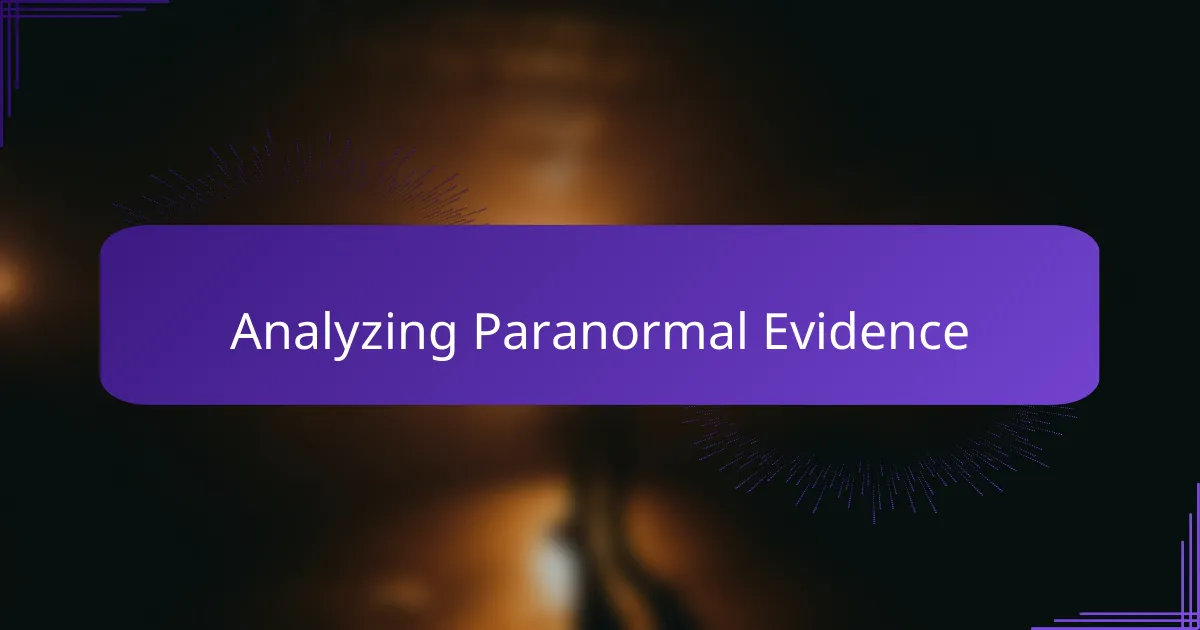
Analyzing Paranormal Evidence
When it comes to analyzing paranormal evidence, I always find myself torn between skepticism and curiosity. How much weight can we really give to eyewitness accounts when fear and imagination can easily color memory? Yet, some reports about the Nuckelavee come with such vivid detail—like the description of its breath wilting crops—that I can’t help but wonder if there’s a kernel of truth beneath the folklore.
I recall examining several photographs and audio clips allegedly linked to the Nuckelavee. Most turned out to be inconclusive or easily explainable by natural phenomena, which reminded me how important it is to approach such evidence critically. But then again, when multiple independent witnesses report similar sensations—like the monster’s stench or an eerie warmth—it challenges me to think: could there be something beyond our current understanding lurking out there?
What frustrates me is how fleeting and inconsistent paranormal evidence often is. The Nuckelavee sightings tend to happen during foggy twilight or storms, moments when visibility is low and our senses are easily distorted. This makes me question whether the atmosphere itself primes witnesses for supernatural encounters, or if there truly is an entity to be found in the shadows. It’s a puzzle that keeps me intrigued, even if definitive proof remains elusive.

My Personal Experiences with the Nuckelavee
I’ve never come face-to-face with the Nuckelavee—thankfully—but I’ve had moments in the Orkney weather that made me wonder if it was nearby. One evening, as fog rolled in thick over the cliffs, I caught a fleeting shadow that vanished before I could quite make sense of it. Was it my imagination, or something more? The eerie stillness in the air that night stays with me.
On another trip, I met a local farmer who insisted his crops had withered overnight after sightings of something “unnatural” nearby. Hearing his story firsthand, the fear in his voice was palpable, and I felt that knot of unease tighten in my own gut. It made me realize how these tales aren’t just spooky stories; they carry real weight for the people who live with them.
Sometimes, I ask myself why the Nuckelavee legend feels so intense compared to other creatures. Maybe it’s the raw horror of its form or the deep cultural roots embedded in Orcadian life. Either way, experiencing the place and hearing these accounts makes the monster feel less like folklore and more like a shadow hovering just at the edge of perception.
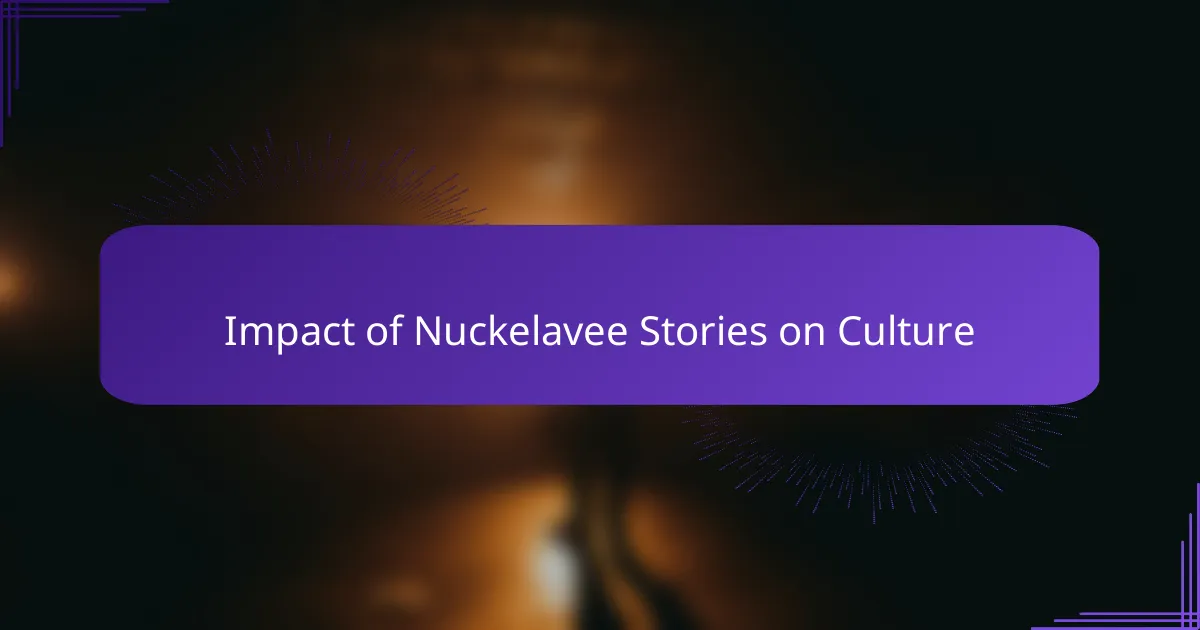
Impact of Nuckelavee Stories on Culture
I’ve noticed how Nuckelavee stories have seeped deeply into Orcadian culture, almost like a shared cautionary tale passed down through generations. It’s fascinating to me how these legends shape local art, from intricate carvings to haunting music, giving people a way to express their reverence and fear for the natural forces around them. Does this storytelling serve merely as entertainment, or is it a vital thread holding community identity together?
What strikes me even more is how the Nuckelavee embodies collective anxieties about environmental hardship and survival. When you hear about crops withering or livestock dying, it’s clear these stories weren’t just about monsters—they were about explaining real disasters in a time when science couldn’t. I can’t help but wonder if this blending of myth and reality helped people find meaning during tough times.
From my perspective, the monster’s presence in popular culture—through books, festivals, and even tourism—shows how folklore evolves yet remains relevant. I once visited an Orkney museum where the Nuckelavee featured prominently, and the pride mixed with wariness in the locals’ eyes was unmistakable. It made me realize that legends like this don’t just haunt the past; they live on as active parts of cultural identity today.
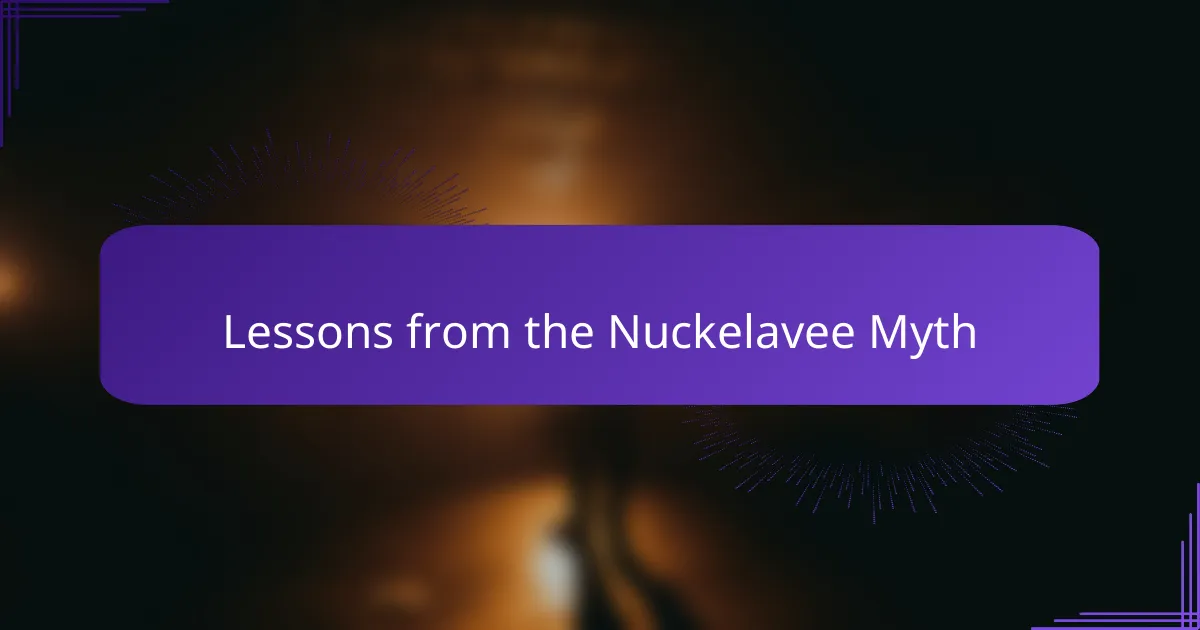
Lessons from the Nuckelavee Myth
What lessons do we really take away from a creature as terrifying as the Nuckelavee? For me, its myth speaks volumes about how humans have long tried to make sense of forces beyond their control, especially environmental disasters. It’s as if our ancestors channeled their fears into stories, painting the monster not just as a threat, but as a symbolic figure warning us to respect nature’s fragile balance.
Thinking back to the Nuckelavee’s deadly breath and its skinless form, I can’t help but feel these gruesome details carry deeper meaning. They remind me how raw and exposed life can be when we ignore the warning signs around us. Have you ever noticed how some myths feel like lessons cloaked in horror, pushing us to pay closer attention before it’s too late?
Finally, reflecting on the Nuckelavee’s inability to cross fresh water, I find an unexpected message of hope. It suggests that boundaries—whether physical or moral—can protect us from destruction if we recognize and honor them. Isn’t that an empowering thought? Even in dark legends, there seems to be a thread showing that survival depends on respect, caution, and sometimes, a little faith in the unseen forces shaping our world.